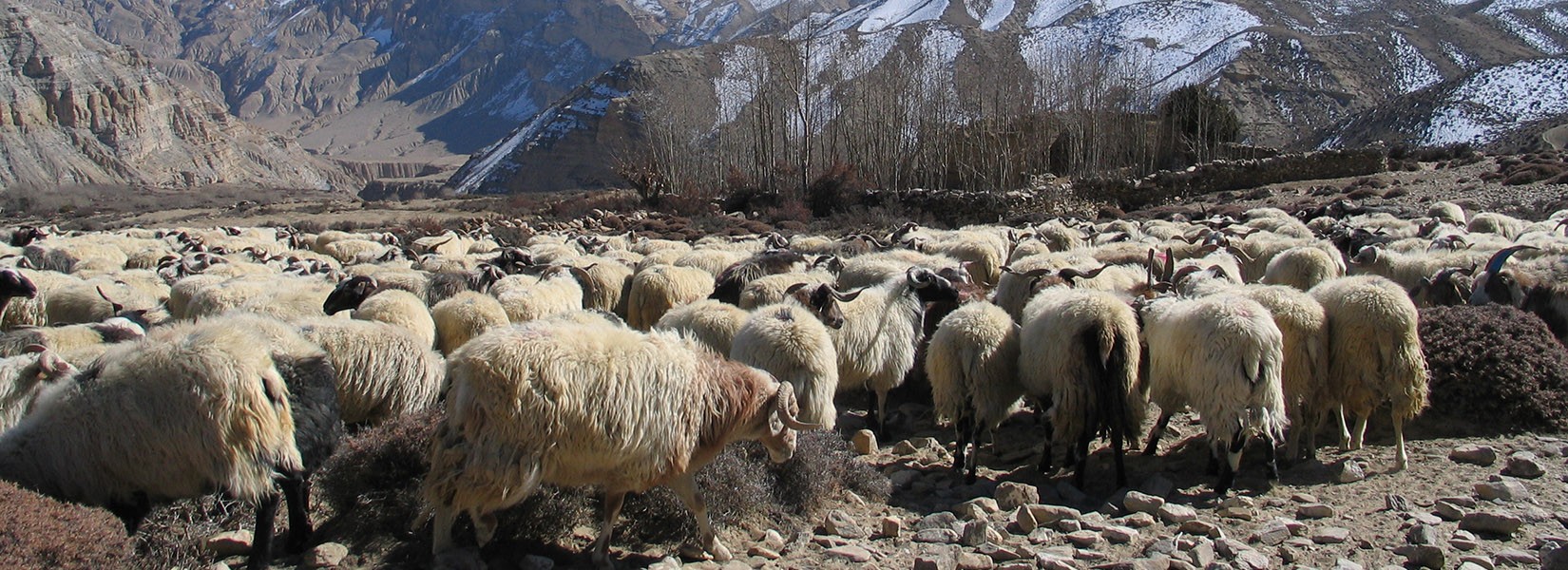Highlights
- Explore the ancient walled city of Lo Manthang, home to royal palaces and monasteries dating back centuries.
- Trek through a unique Tibetan-style desert landscape with colorful cliffs, canyons, and caves.
- Experience a thrilling mountain flight to Jomsom, with panoramic views of the Annapurna and Dhaulagiri ranges.
- Visit historic Buddhist monasteries, chortens, and the longest Mani wall in Nepal at Ghami.
- Discover Chhoser Cave, an ancient sky cave complex carved into cliffs.
- Stay in traditional villages such as Kagbeni, Charang, and Dhakmar, where time seems to stand still.
- Immerse yourself in Tibetan-influenced culture and interact with the warm, hospitable local people.
- Trek in the restricted Upper Mustang region, a land that remained closed to outsiders until 1992.
- Walk through high-altitude desert terrain that is beautiful in spring (wildflowers) and autumn (crystal-clear skies).
About Upper Mustang Trek - 14 Days
"Journey to the Hidden Kingdom of Lo"
The Upper Mustang Trek is one of Nepal’s most fascinating adventures, taking you into the ancient and restricted kingdom of Mustang — a region often described as a “mini Tibet.” Unlike other trekking destinations in Nepal, Mustang lies in the rain shadow of the Annapurna and Dhaulagiri ranges, creating a high-altitude desert with dramatic cliffs, barren canyons, and colorful rock formations.
For centuries, Mustang was a part of the Tibetan Kingdom, and its culture remains deeply influenced by Tibetan Buddhism. The trek takes you through medieval villages, centuries-old monasteries, sacred caves, and the legendary walled city of Lo Manthang, the former capital of Mustang.
This 14-day journey begins in Kathmandu, moves to Pokhara, and continues with a thrilling mountain flight to Jomsom. From there, you trek north along the Kali Gandaki River Valley into the restricted Upper Mustang region. The trail reveals ancient gompas, Mani walls, sky caves, and red cliffs that feel almost otherworldly.
Unlike treks in the Everest or Annapurna regions, Upper Mustang offers a cultural immersion as much as a natural one. The highlight is spending time in Lo Manthang and exploring Chhoser Cave and remote monasteries. You’ll then return via scenic villages like Dhakmar and Ghiling, completing the circuit.
Because Upper Mustang is a restricted area, a special trekking permit is required. This exclusivity has preserved its traditions and landscapes, making it one of Nepal’s most unique and rewarding trekking experiences.
Tips & Ideas
Important Notes
Permits: The Upper Mustang region requires a Restricted Area Permit (RAP), which costs USD 500 per person for 10 days. Extra days cost USD 50 per day.
Best Seasons: March–May (spring) and September–November (autumn) are the best times. The region lies in a rain shadow, so summer (June–August) is also possible.
Difficulty: This is a moderate trek. Maximum altitude is around 3,800 m, so altitude sickness is less severe compared to Everest or Annapurna treks.
Accommodation: Tea houses are basic but comfortable. Rooms are usually twin-sharing with shared bathrooms.
Connectivity: Wi-Fi is available in some lodges, but it can be slow and comes with a small charge. Mobile coverage is limited.
Equipment List
Here’s a suggested packing list for the Upper Mustang Trek:
Clothing
Trekking boots (well broken-in)
Lightweight trekking shoes/sandals for evenings
Thermal base layers (top and bottom)
Fleece jacket or sweater
Down jacket (warm, compressible)
Waterproof/windproof jacket and pants
Trekking pants and T-shirts (quick-dry)
Warm hat, gloves, and buff/scarf
Gear
Backpack (35–45L for daily use)
Duffel bag (provided by the company)
Sleeping bag (comfort rating -10°C recommended)
Trekking poles
Headlamp with extra batteries
Sunglasses and sunscreen
Essentials
Personal first-aid kit and medications
Reusable water bottle or hydration bladder
Water purification tablets/filters
Power bank/solar charger
Snacks/energy bars
FAQs
1. How difficult is the Upper Mustang Trek?
It is considered a moderate trek. The maximum altitude is about 3,800 m, so the risk of altitude sickness is lower than in other treks like Everest Base Camp. However, long trekking days (5–7 hours) and the dry, windy conditions require good fitness.
2. Do I need a special permit?
Yes. The Upper Mustang region is a restricted area. You’ll need a Restricted Area Permit (RAP) costing USD 500 for the first 10 days and USD 50 per additional day. An ACAP permit is also required. These are arranged by your trekking agency.
3. What is the best time for the trek?
Spring (March–May) and autumn (September–November) are ideal. Summer is also possible because Mustang lies in a rain shadow. Winter (December–February) is cold and less recommended.
4. Can I do the trek solo?
No. By law, trekkers in Upper Mustang must be accompanied by a licensed guide and a minimum of two people. Solo trekkers can join group departures.
5. What kind of accommodation is available?
Tea houses along the route provide basic rooms, usually twin-sharing with shared bathrooms. Meals are served in communal dining halls. Facilities are simple but comfortable.
6. Is travel insurance mandatory?
Yes. You must have insurance that covers trekking up to 4,000 m and emergency helicopter evacuation.
7. How do I prepare for the trek?
Regular walking, hiking, or cardio exercises before the trek will improve stamina. Since the terrain is dry and windy, hydration is also very important.


